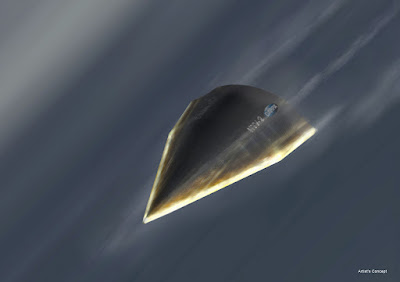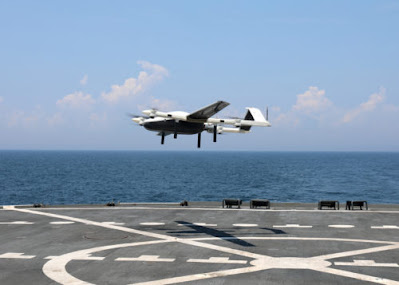We’ve talked a great deal about designing warships to be survivable and, during the course of those discussions, the topics of separation and redundancy have come up time and again. Well, it’s time to examine them in greater detail.
Survivability encompasses not just physical survival – the ability to sail away without sinking at the conclusion of a battle – but the ability to stay in the fight, functioning effectively, albeit limited, as damage accumulates, right up until the battle concludes or the ship sinks.
Two important elements of survivability are separation and redundancy.
Separation – is just what the term implies. Important items are physically separated by as wide a distance as possible. The rationale is straightforward: the desire to minimize the likelihood of a single hit destroying multiple, identical items. For example, it would be a poor design that locates all of a ship’s radars within the space that a single weapon explosion could affect. Separation can sometimes be aided, to an extent, by interposing structures. For example, radar faces on two sides of a superstructure may not be separated very far in terms of straight line distance but the structural elements between them may offer an enhancement to the effective separation. Of course, if the separating structural elements are paper thin sheet metal then the gain is minimal.
Redundancy – recognizes that items will be damaged and destroyed in combat and survivable ship designs mitigate this by mounting more than one of each critical item. For example, it would be a poor design that allocates only a single gun or a single CIWS to a ship. A single hit could remove all of a ship’s capability for that function.
Redundancy concerns were highlighted in the recent post on defensive weapon fits where we saw how few defensive weapons are mounted on each ship class. There is very little redundancy. Our most important, powerful, and expensive ships, the Nimitz class carriers, have two of each defensive weapon. How is that redundancy? WWII ships typically had dozens of each type of weapon – that’s redundancy! A single hit barely scratched the surface of a WWII ship’s fighting capability. A single hit on a modern ship can almost eliminate the ship’s entire combat capability!
Now, let’s consider some actual examples of separation and redundancy - or the lack thereof – in the Navy’s ship classes.
Burke Class
Radar/Illuminators – The heart of the Burke’s anti-air capability is not its VLS or even the Aegis system; it is the fire control radars/illuminators. The Burke class depends on three fire control radars (SPG-62) to guide its anti-air missiles. Without those three radars the various missiles that depend on semi-active radar guidance are useless. Unfortunately, two of the Burke’s three fire control radars are clustered on the aft superstructure within about ten feet of each other. A single hit in the area will eliminate 2/3 of the Burke’s fire control radars. This is an incredibly poor example of the lack of separation for incredibly important equipment. On the plus side, the remaining fire control radar is located atop the forward superstructure, well separated from the other two radars.
 |
| Burke - Note the two illuminators clustered together along with the CIWS |
Guns – The Burke class has a single 5” gun and a single CIWS … the epitome of lack of redundancy.
VLS – The Burke’s VLS is split into two groups, one forward (32 cells) and one aft (64 cells). While the separation is excellent, the redundancy for the ship’s main weapon system is poor with only two unarmored ‘mounts’. The VLS ought to be split into at least 3 groups and, preferably, 4 or 5. That’s less efficient but much more survivable.
Harpoon – For those Burkes that carry Harpoons, the missiles are mounted in two Mk141 launcher racks that are located side by side with no separation.
It is clear that the Burke is a very poor design as regards separation and redundancy. The fire control illuminators, in particular, are an extreme vulnerability in the design with two of the three being located next to each other. Similarly, a couple unlucky hits could completely eliminate the ship’s entire VLS weaponry.
Ford Class
Radar - The Ford radar arrays are tightly clustered on the small island. A single hit on the island will likely see all the radars lost.
Anti-Air Weapons – The Ford defensive weapons are well separated around the periphery of the flight deck. Unfortunately, there is very little redundancy with only two each of RAM and ESSM weapons and three CIWS.
Zumwalt Class
VLS – The Zumwalt’s VLS cells are spread along the sides of the ship. This is not the classic separation of discrete mounts but it does provide a degree of separation – ‘spreading’ is a more apt description. In a sense, this spreading of the VLS provides not only a degree of separation but also a degree of effective redundancy.
Radars – The Zumwalt radar arrays are scattered along the massive superstructure which provides good separation.
Guns – The Advanced Gun System (AGS) that was to be the ship’s main weapon consisted of two guns located on the forward deck with about 20 m center-to-center separation. This is poor example of both separation and redundancy. Of course, since the weapons are non-functional, the point is moot.
Ironically, the Zumwalt, for all its other flaws (like no close in defensive weapons at all !) actually has better separation and redundancy schemes than other Navy ships.
Ticonderoga Class
Radar/Illuminators – As with the Burke class, the Ticonderogas use fire control radars/illuminators. There are four illuminators, which is better redundancy, but the are located in two widely separated fore/aft pairs with individual units of each pair being located within around 10 ft of each other. As with the Burkes, this clustering of the main component of the ship’s defensive capability is a very poor design.
The Ticonderoga’s SPY radar arrays are split into pairs which are widely separated with one pair on the forward superstructure and the other pair on the aft superstructure. Unfortunately, each pair of arrays are tightly clustered within several feet of each other. So, some good separation and some bad.
Compounding the problem is the fact that the fore and aft illuminators are located close to the radar arrays. A single hit could easily eliminate two arrays and two illuminators. That’s a very poor design.
VLS – The VLS is split into two groups, one forward (61 cells) and one aft (61 cells). While the separation is excellent, the redundancy for the ship’s main weapon system is poor with only two unarmored ‘mounts’. A single hit on either group will cost the ship half its weapons. The VLS ought to be split into at least 3 groups and, preferably, 4 or 5. That’s less efficient but much more survivable.
The Ticonderogas have better redundancy than the Burkes but have a significant design flaw with the fore and aft groupings of the radar arrays and the illuminators. Added to this is the lack of redundancy in the VLS groups.
Guns – The Ticonderogas have two 5” guns, one far forward and one far aft which is excellent separation although the redundancy is lacking. The class has two CIWS which are located within around 30 ft of each other which is poor separation and poor redundancy.
Harpoon – The Ticonderoga Harpoon missiles are mounted in two Mk141 launcher racks that are located on the port corner of the stern, side by side with no separation.
| Ticonderoga - Note the two Harpoon launchers side-by-side on the stern. |
San Antoinio Class
Radar/Illuminators – The San Antonios have two radars, each mounted on its own enclosed mast, with wide separation. Unfortunately, neither radar is capable of performing the other’s task so there is no redundancy.
RAM – The San Antonios have two Rolling Airframe Missile launchers, one on each corner of the superstructure with excellent separation but, with only two launchers, poor redundancy.
Well Deck – The well deck has only one opening, in the stern. A hit (or simple mechanical failure of the door) would render the entire well deck and the ship’s very reason for existence – landing troops and equipment – non-functional. This single point of failure is the epitome of the lack of redundancy. Before someone snidely asks how else the well deck could possibly be accessed, let me remind you that the WWII Attack Transports (APA) carried two dozen landing craft scattered around the ship and no single hit or failure could possibly render the transport non-functional. It’s time we re-examine our design philosophy about amphibious assault with an eye to remaining functional even in the face of combat damage.
Conclusion
It is clear that our CRUISEships are not designed for combat and are not survivable. We have all but abandoned combat-effective levels of redundancy and are ignoring separation of critical equipment. We need to recall the WARship design lessons of WWII and return to designing ships for combat.
One of the things that the Navy has forgotten in its quest to design ships as business cases is that combat is not an accounting exercise. Many/most aspects of a good, robust, survivable WARship design are antithetical to accounting and business practices. In short, combat is an inefficient, costly activity that often rewards inefficient designs. Clustering most of a ship’s weaponry into two VLS groups may be efficient but it is not a combat-survivable design. Combining several individual radars into a single radar may be efficient but it is not combat-survivable. Separation and redundancy are, almost by definition, inefficient and yet they are vital to combat survival. We need to stop designing based on accounting and business and start designing for combat, as our fathers did in WWII.
___________________________________
Note: Closely related to redundancy is backup. Backup items, as opposed to identical, redundant items, should be functionally the same but use a different technology and be as completely isolated and separated from the primary item as possible. This includes using separate power and computing sources. Otherwise, a single hit resulting in loss of power (severed power cable, for example) could render both the primary and backup inoperative. An industrial example of a primary and backup system would be a chemical reactor water cooling system using typical pumps for circulation. The backup system would be a gravity fed water tank that can be cross-connected into the reactor in the event of electrical power loss. A naval example of a primary and backup system would be a radar guided fire control system. The backup would be an optical fire control system, possibly in local mode. This is exactly the arrangement that was used in WWII, by the way. We understood all these design concepts once upon a time.






